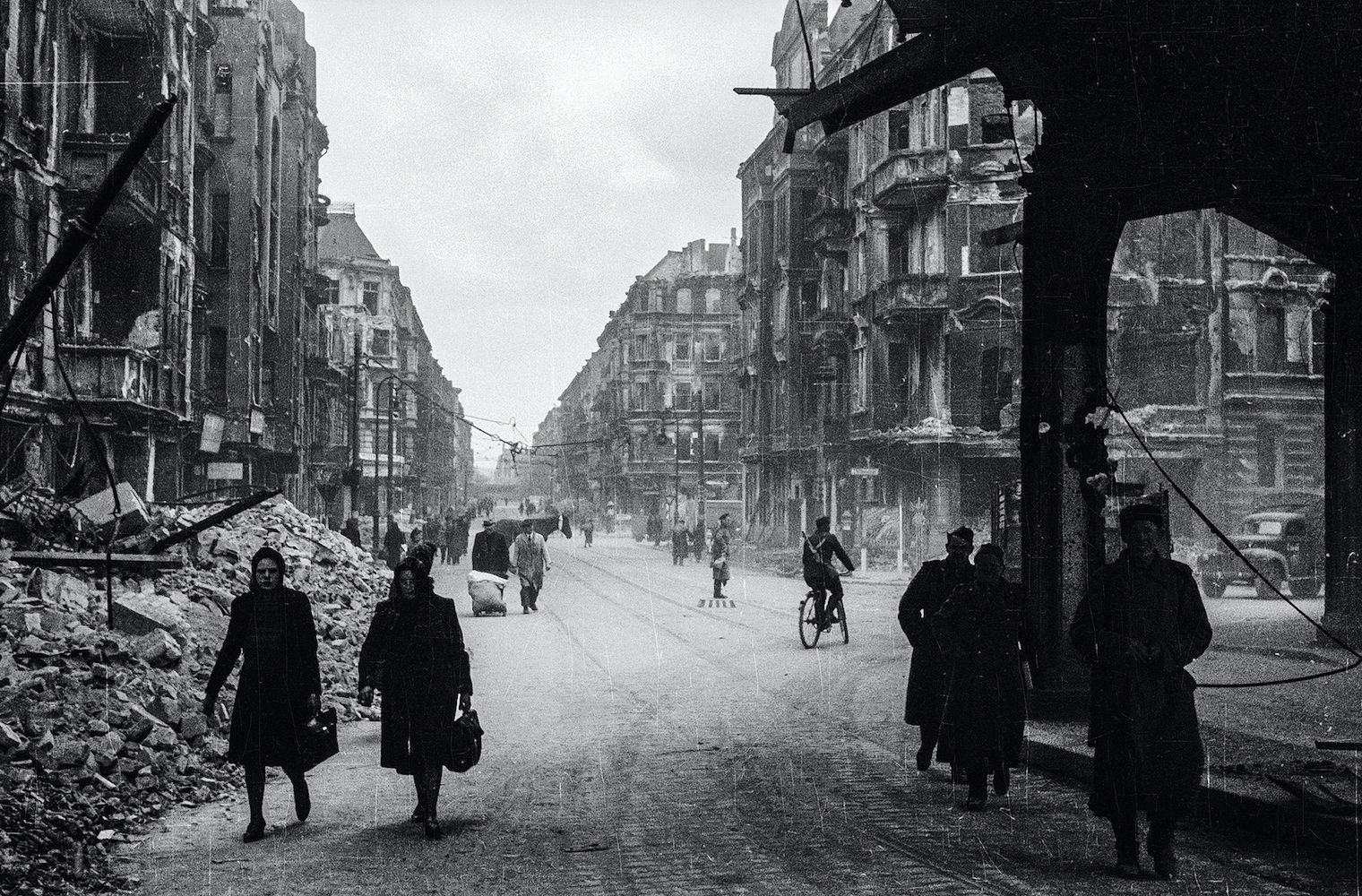Mai 1945
January 5, 2021 Valery Faminsky Berlin War Peter Steinbar Arthur Bondar William Faulkner Time History
Everybody loves a good archive find. In 2016, photographer Arthur Bondar bought the archives of a Soviet war photographer, Valery Faminsky, and discovered some startling images Faminsky had taken in the direct aftermath of Germany’s surrender in World War II.

Faminsky, himself excluded from serving in the army for his bad eyesight, captured a very unique look of the destroyed city—despite of his task to take propaganda pictures. His images are sober but expose a brutal reality—both on the sides of the destroyed and beaten civilians as on the jaded Russian solders who had won the battle.
In the foreword to the book, Peter Steinbach drawn a refreshing allegory from 1945 to our very present:
For this reason, the meaning of these images—these surprising images of documentary photography and war recording — cannot be overestimated. They do not succumb to the inhuman, nor to ideology and now to politicised conceptions of humanity. We feel the empathy of the observer when we see the women nervously walking the streets, carrying buckets full of water: you can feel the seemingly existential loneliness of pedestrians that bear no resemblance to a strolling passer-by. We see forced laborers living ‘between bombs and the Gestapo’, as endangered by attacks as were the German inhabitants of Berlin. If the present is a result of the past, then the future is a result of the present.
William Faulkner once wrote that “The past is never dead. It’s not even past.” Steinbach makes that crystal clear as he goes on:
When we see the ruins documented by Faminsky, we think of Hue in Vietnam, Aleppo in Syria, destroyed cities in Iraq, Afghanistan and it the Far East. We begin to fathom that history never just was but that it is. When we see how people (almost always women) queue to fill their buckets with water, similar images from our won time begin to appear before our eyes. Who does not think of the few reservoirs in refugee camps, of women hauling containers filled with water? Or course, history was not, it is.